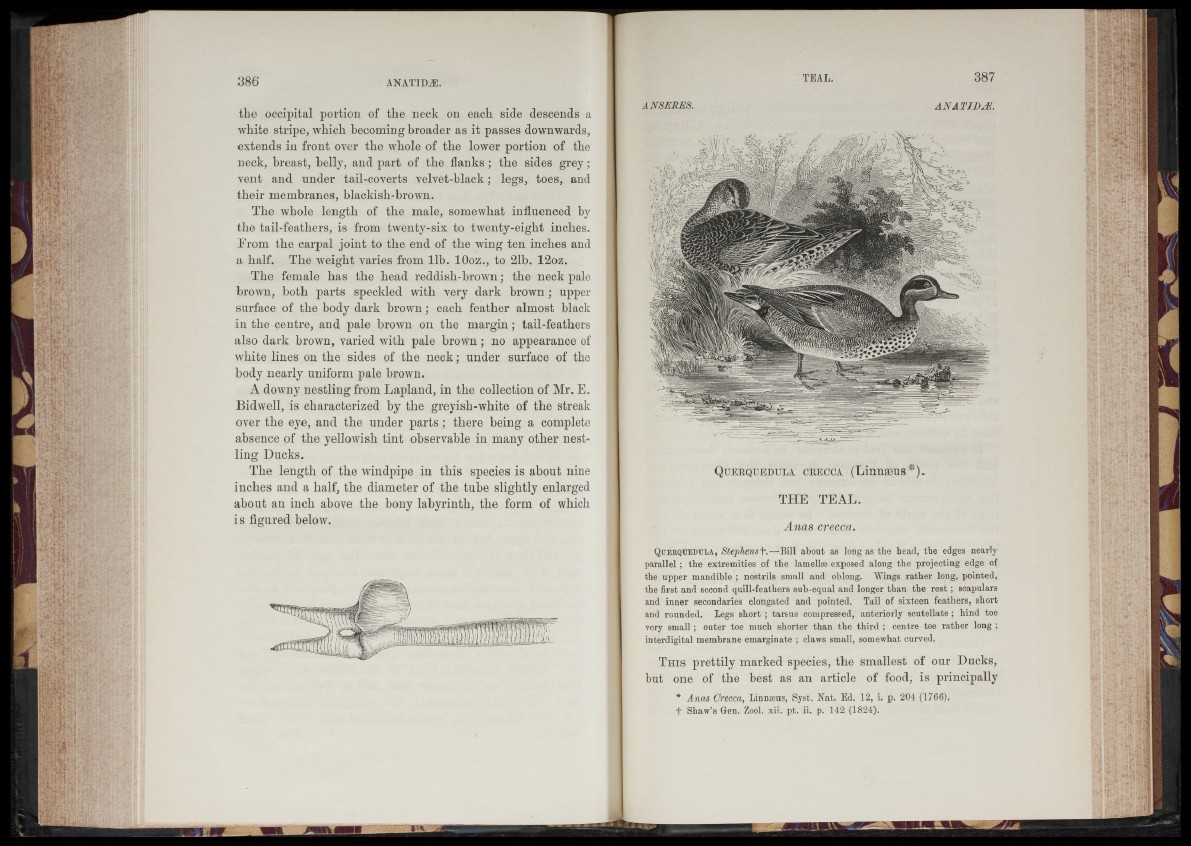
tlie occipital portion of the neck on each side descends a
white stripe, which becoming broader as it passes downwards,
extends in front over the whole of the lower portion of the
neck, breast, belly, and part of the flanks ; the sides grey;
vent and under tail-coverts velvet-black; legs, toes, and
their membranes, blackish-brown.
The whole length of the male, somewhat influenced by
the tail-feathers, is from twenty-six to twenty-eight inches.
From the carpal joint to the end of the wing ten inches and
a half. The weight varies from lib. 10oz., to 21b. 12oz.
The female has the head reddish-brown; the neck pale
brown, both parts speckled with very dark brown ; upper
surface of the body dark brown; each feather almost black
in the centre, and pale brown on the margin; tail-feathers
also dark brown, varied with pale brown ; no appearance of
white lines on the sides of the neck; under surface of the
body nearly uniform pale brown.
A downy nestling from Lapland, in the collection of Mr. E.
Bidwell, is characterized by the greyish-white of the streak
over the eye, and the under parts ; there being a complete
absence of the yellowish tint observable in many other nestling
Ducks.
The length of the windpipe in this species is about nine
inches and a half, the diameter of the tube slightly enlarged
about an inch above the bony labyrinth, the form of which
is figured below.
ANSERES. ANA TIDAL
Querquedula crecca (Linnaeus*).
THE TEAL.
Anas crecca.
Q u e r q u e d u l a , Stephensf.—Bill ab o u t as long as th e head, th e edges nearly
parallel ; th e ex trem ities of th e lamellae exposed along th e p ro jectin g edge of
the u p p er mandible ; n o strils small and oblong. Wings ra th e r long, pointed,
the first and second q u ill-fea th e rs sub-equal an d longer th a n th e re st ; scapulars
and in n e r secondaries elongated an d pointed. Tail of sixteen feathers, sh o rt
and rounded. Legs sh o rt ; ta rsu s compressed, an terio rly scutellate ; h in d toe
very small ; o u te r toe much sh o rter th a n th e th ird ; centre toe ra th e r long ;
in terd ig ital membrane emarginate ; claws small, somewhat curved.
T h i s p r e t t i l y m a r k e d s p e c i e s , t h e sm a l l e s t o f o u r D u c k s ,
b u t o n e o f t h e b e s t a s a n a r t ic le o f f o o d , i s p r in c ip a l ly
* Anas Crecca, Linnaeus, Syst. Nat. Ed. 12, i. p. 204 (1766).
f Shaw’s Gen. Zool. xii. p t. ii. p. 142 (1824).